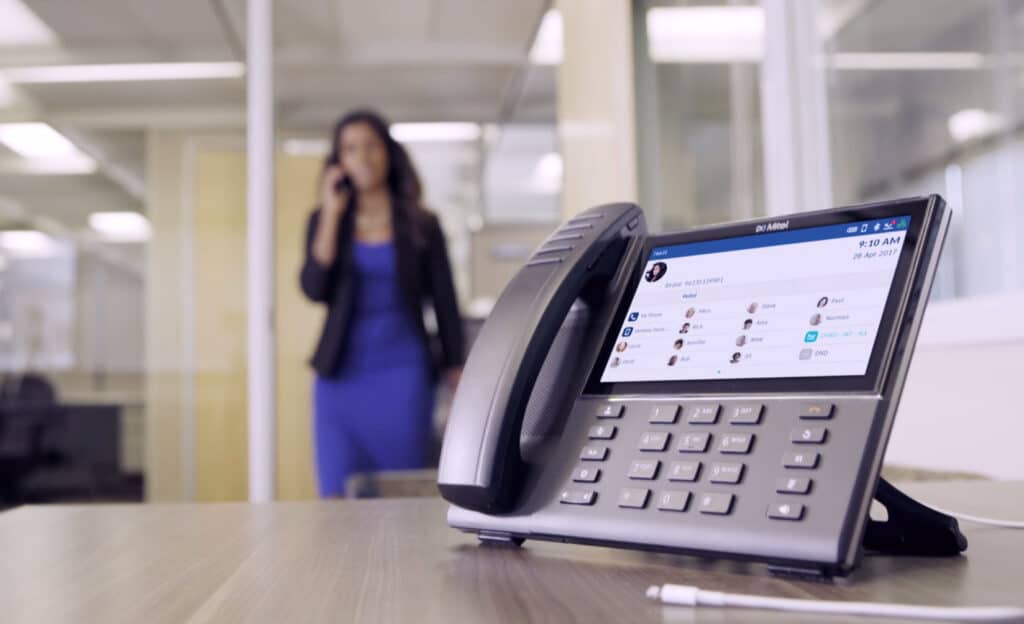In light of two recent federal laws strengthening the effectiveness of emergency calls, many schools are taking a more critical look at their multiline telephone systems. Today, we’re sharing some of the key aspects of these two laws and an opportunity to better understand their impact while implementing changes that help ensure the safety and security of your school community.
Kari’s Law
If your school district’s multi-line phone system still requires you to dial 9, or any other number, before reaching an outside line, you’ll want to learn more about Kari’s Law.
This Federal Communications Commission regulation implements a set of changes that impact multiline telephone communications like those often found in schools and districts nationwide. The FCC regulation now requires such systems to allow users to dial 911 without entering a prefix. In addition, Kari’s Law requires that notification to another resource (for many districts this would be a security office) is received when a 911 call is made.
While this law is designed to ensure easier and more comprehensive emergency communication, many older or less integrated phone systems will need to be enhanced or upgraded to allow for these changes.
Ray Baum’s Act
In addition to Kari’s law, another recent FCC regulation is impacting multiline telephone systems. This regulation is called Ray Baum’s Act and it too has implications for school district-wide telecommunications. Specifically, Ray Baum’s Act requires all multi-line phone systems to send a dispatchable location along with a “call back” number each time a 911 call is made. This helps to ensure that police and other emergency responders understand where to route resources during an urgent situation and how best to respond.
In school districts that use multi-line phone systems (as most do), Ray Baum’s Act has been and continues to be quite impactful as such pre-existing systems will need to be enhanced to accommodate these requirements.
Learn More On Our On-Demand Campus Safety Webcast Series Complimentary Educational Webinar
So, what do each of these FCC regulations really mean for school communities with multiline phone systems?
How can district and school leaders make changes that align with the recent regulations and continue to ensure the safety and security of their school communities?
If you have questions like these, Eastern DataComm invites you to participate in our online on-demand webinar, a part of the Campus Safety Webcast Series, that is focused on enhancing school safety technology while complying with recent FCC regulations regarding emergency phone communication requirements. Campus Safety shares important educational resources with campus police chiefs, security directors, IT personnel, emergency managers, facilities directors, risk management professionals and executive administrators involved in the public safety and security of hospitals, schools, and universities in the United States.
Additionally, we’ve partnered with Mitel, an industry leader in telecommunications, to offer you a thorough and informative presentation.
During the webinar, we’ll review the recent FCC regulations with vital details regarding how multi-line phone systems (like those typically used within a school district) must function in an emergency and how to safeguard your school community by leveraging technology in emergencies like lockdowns or active shooter events.
Register To View Our Latest Connected And Protected Webinar
To register and participate in this complimentary educational opportunity, visit this link.
If you have more questions particular to your school district’s telephone system needs, write to us at [email protected] to schedule your complimentary Phone System Consultation.
Our team of advisors is here to do a deep-dive with you, examining the current technology you have in place and gaining a full understanding of your considerations – be they budget, timeline, strategy, or otherwise. Based on the unique safety and communication solutions needs of your school district, we’ll share with you best practices and recommendations on how to seamlessly keep your school community connected and protected. We view school safety holistically. As the phone system is a critical component of keeping your faculty, students, and staff safe, we also explore with you emergency notification, video surveillance, and access control technologies that can further augment the work you do to ensure the safety of your school community. Consider us your collaborative resource to aid in the betterment of how you safeguard your campus.
Because when it comes to school safety, we’re all in this together.


